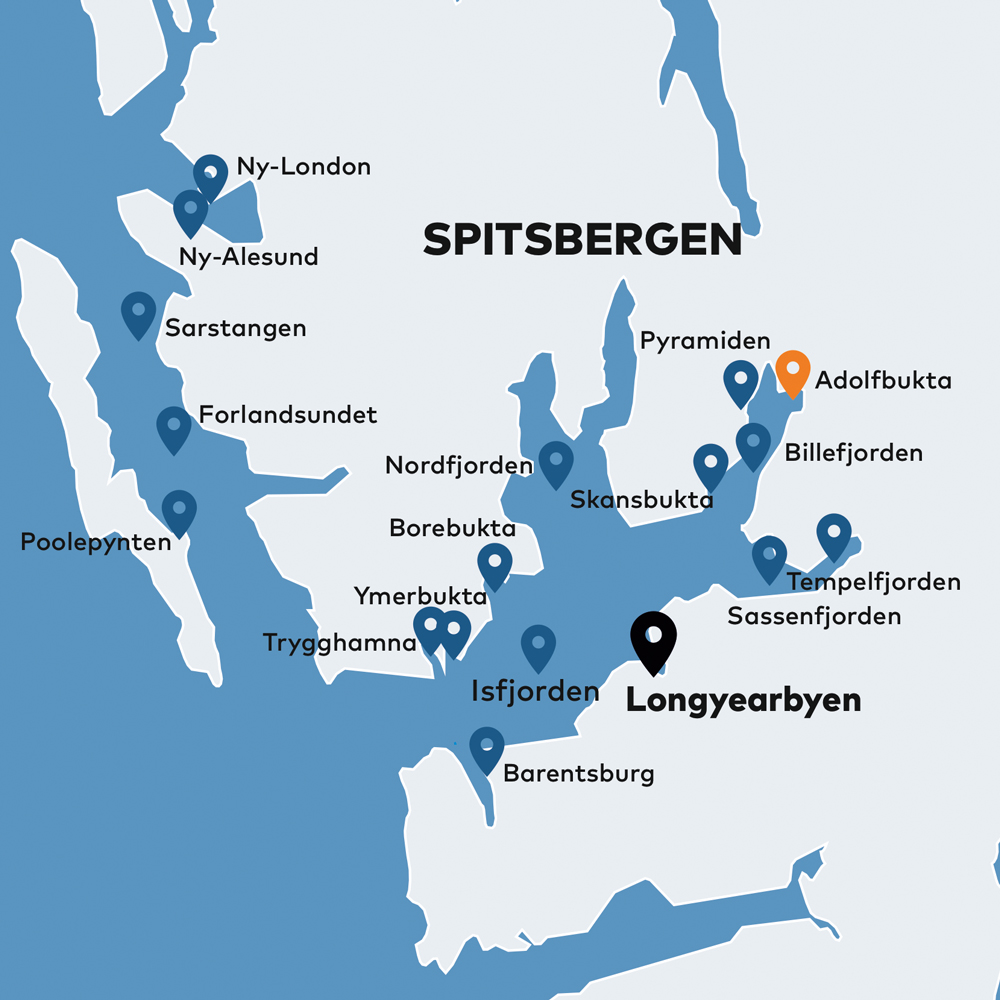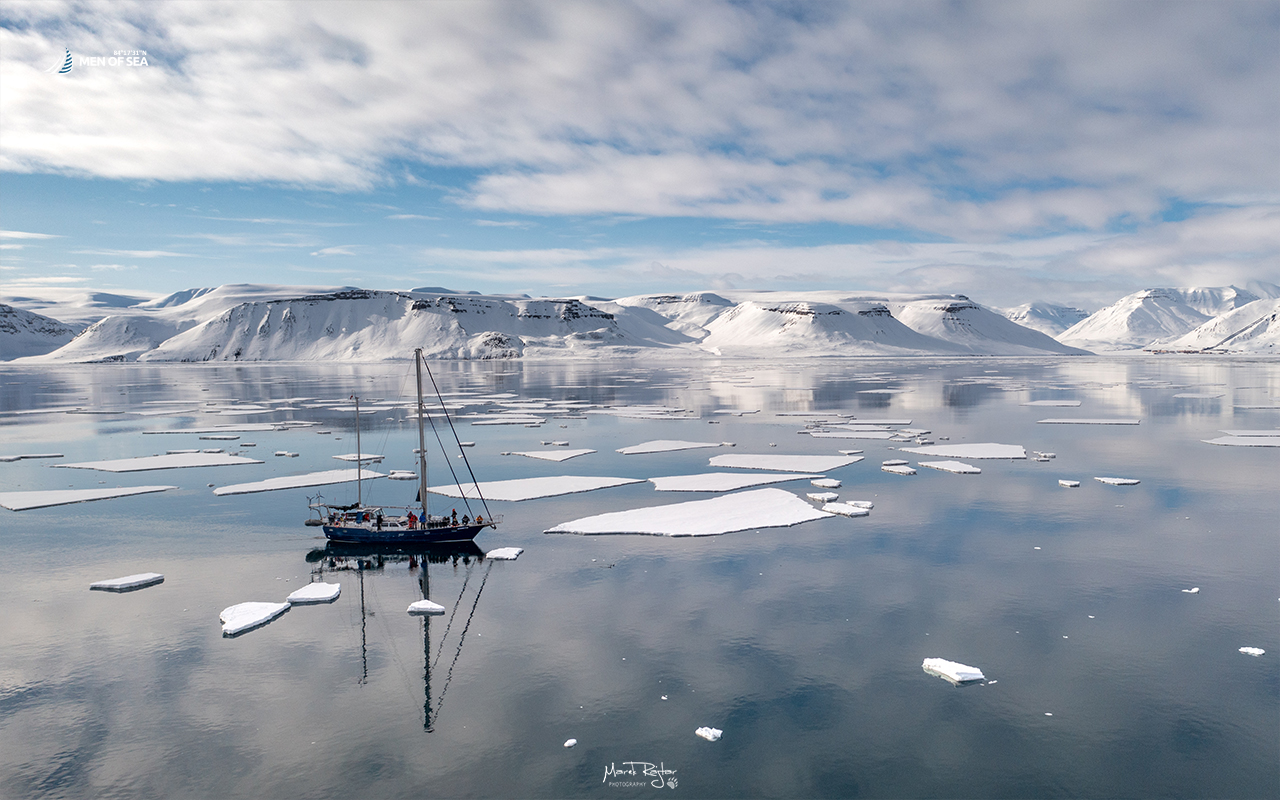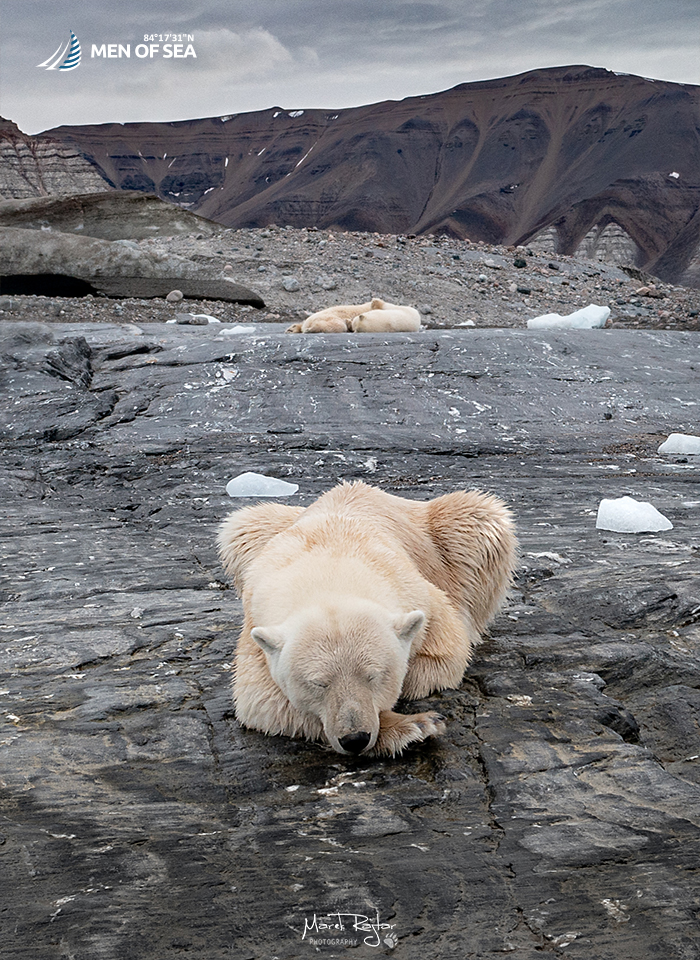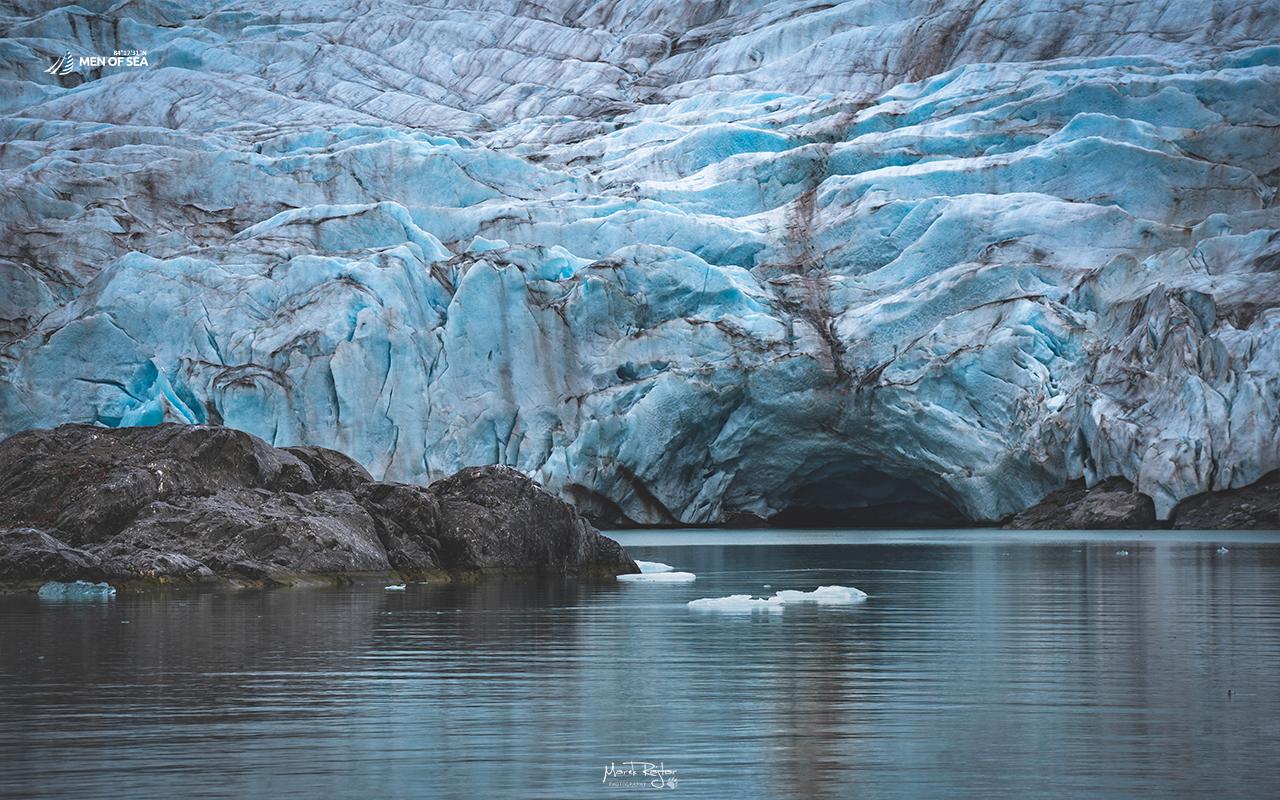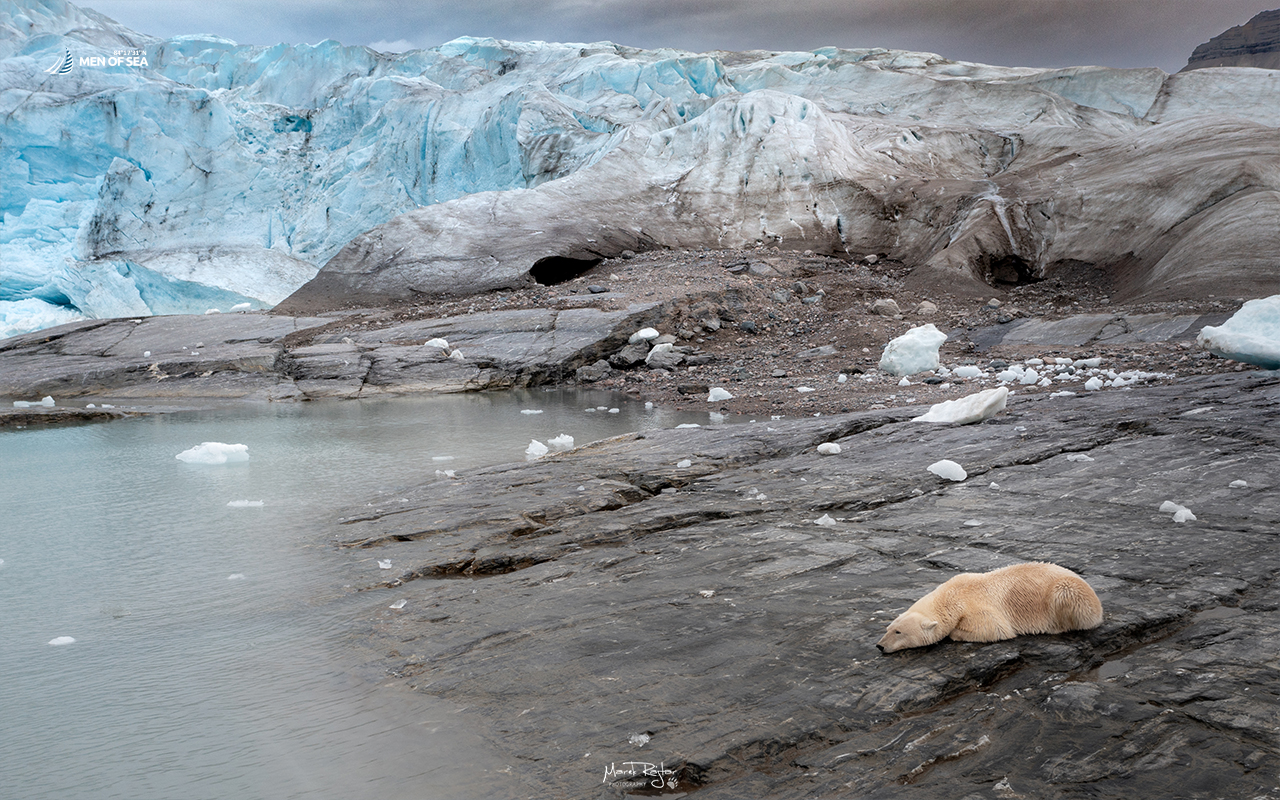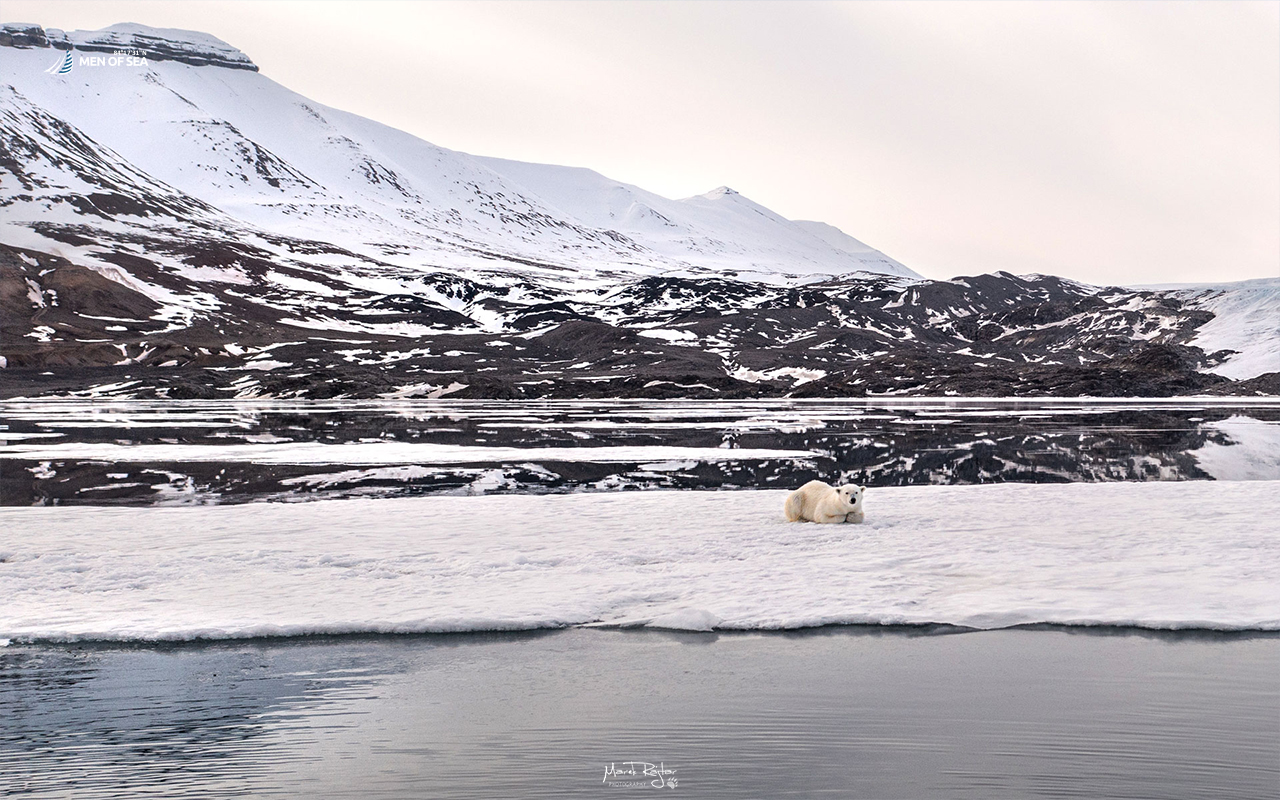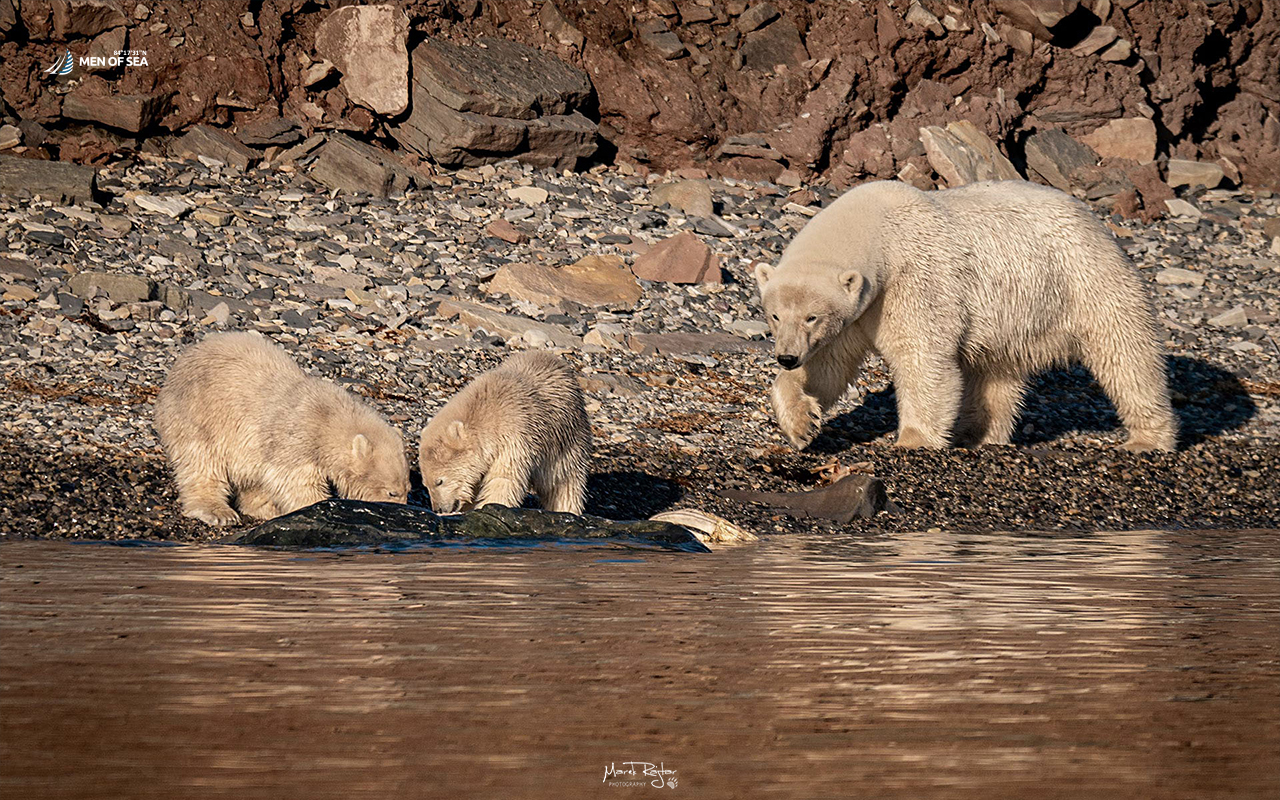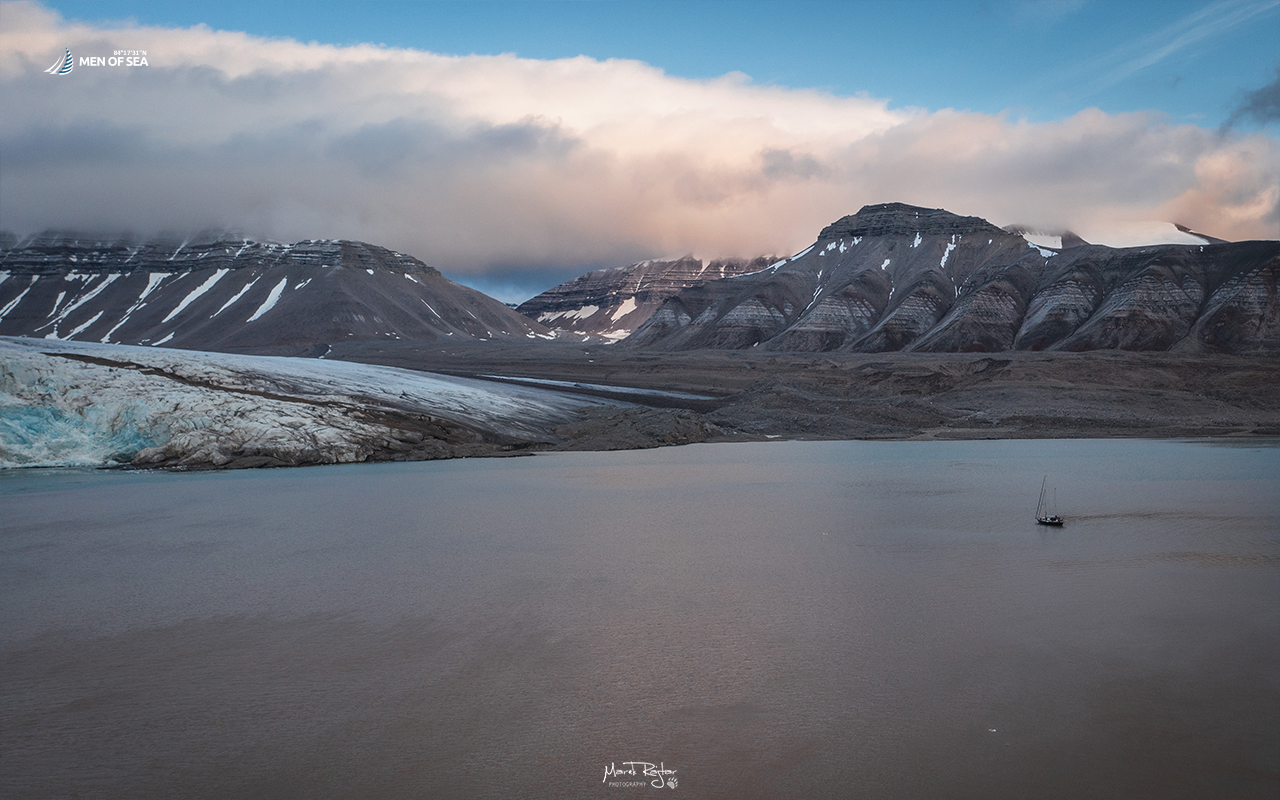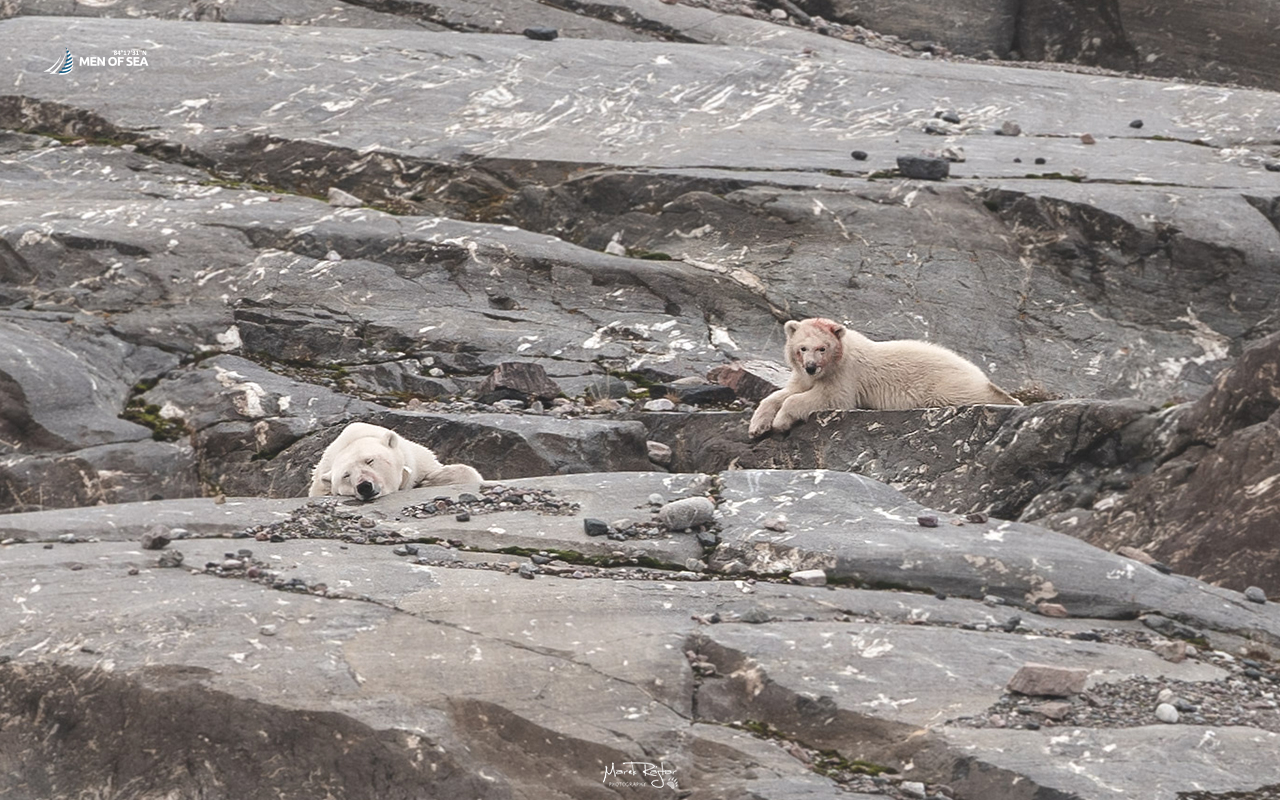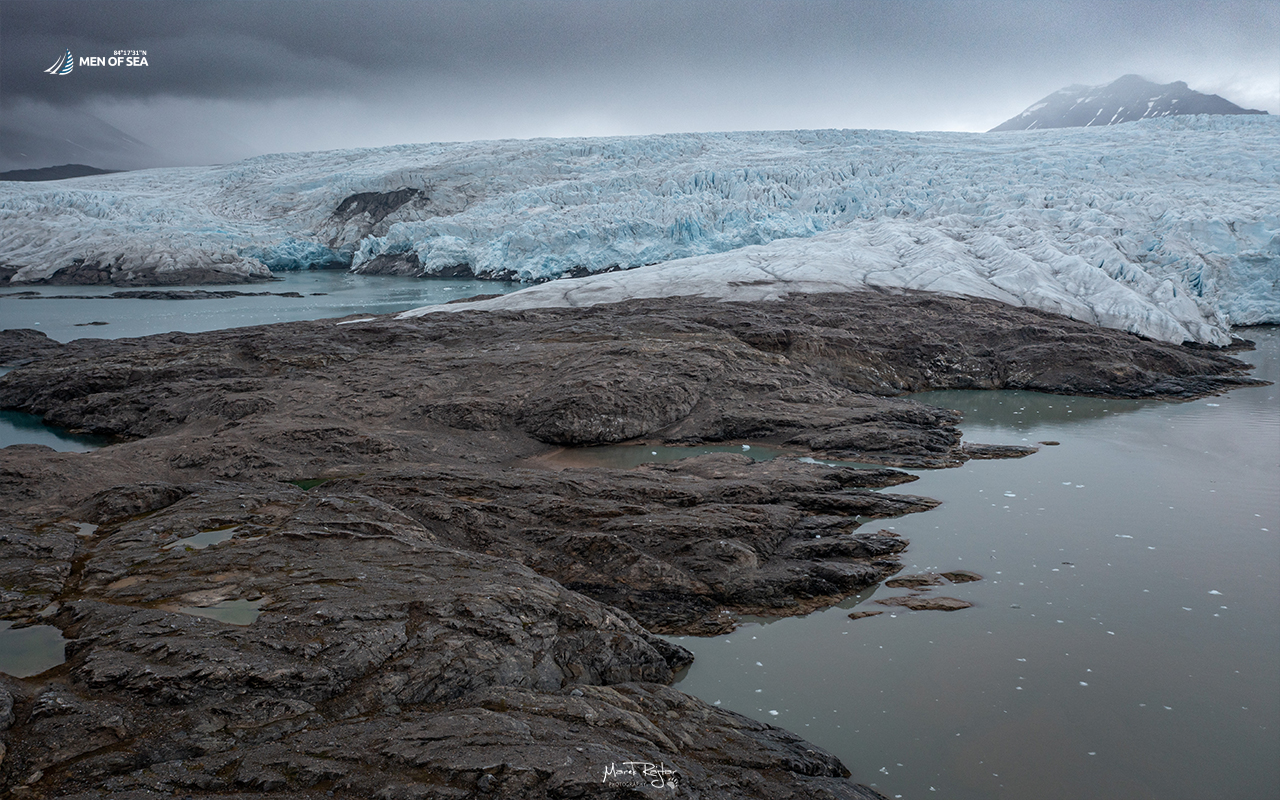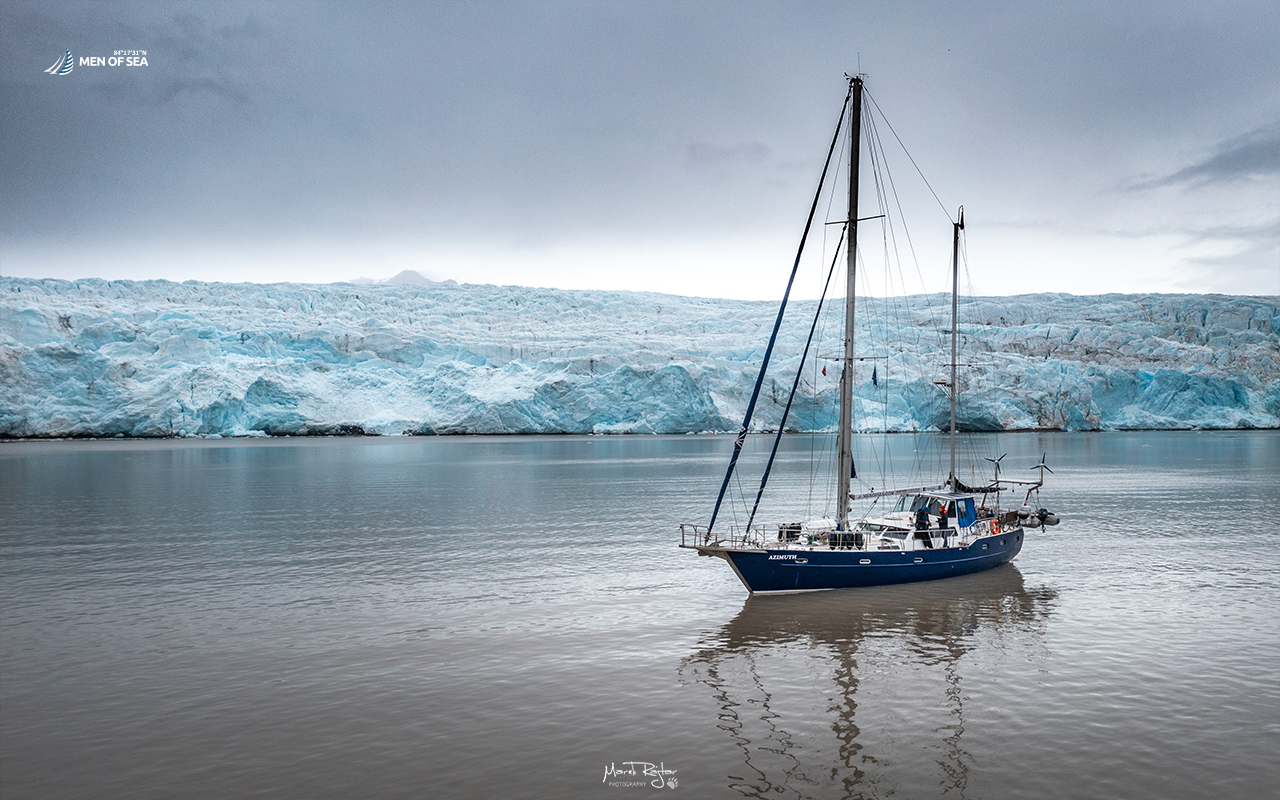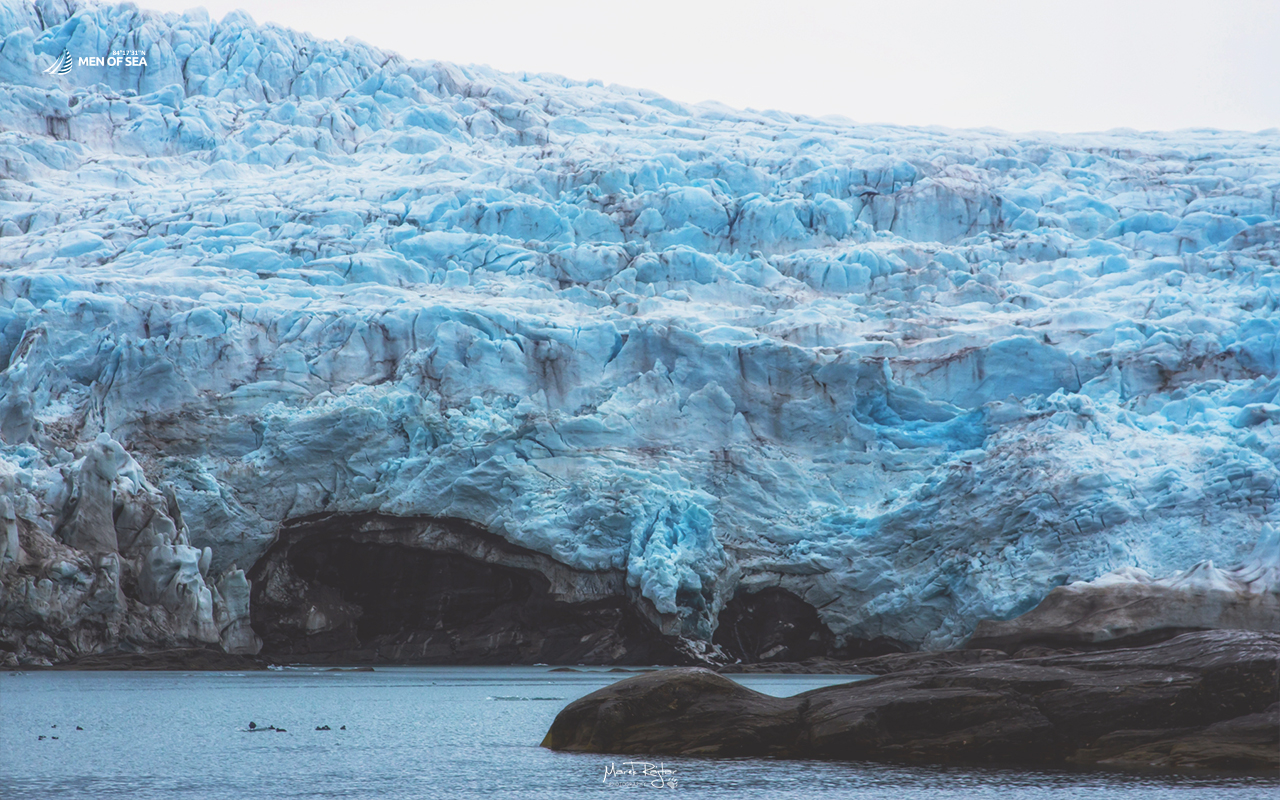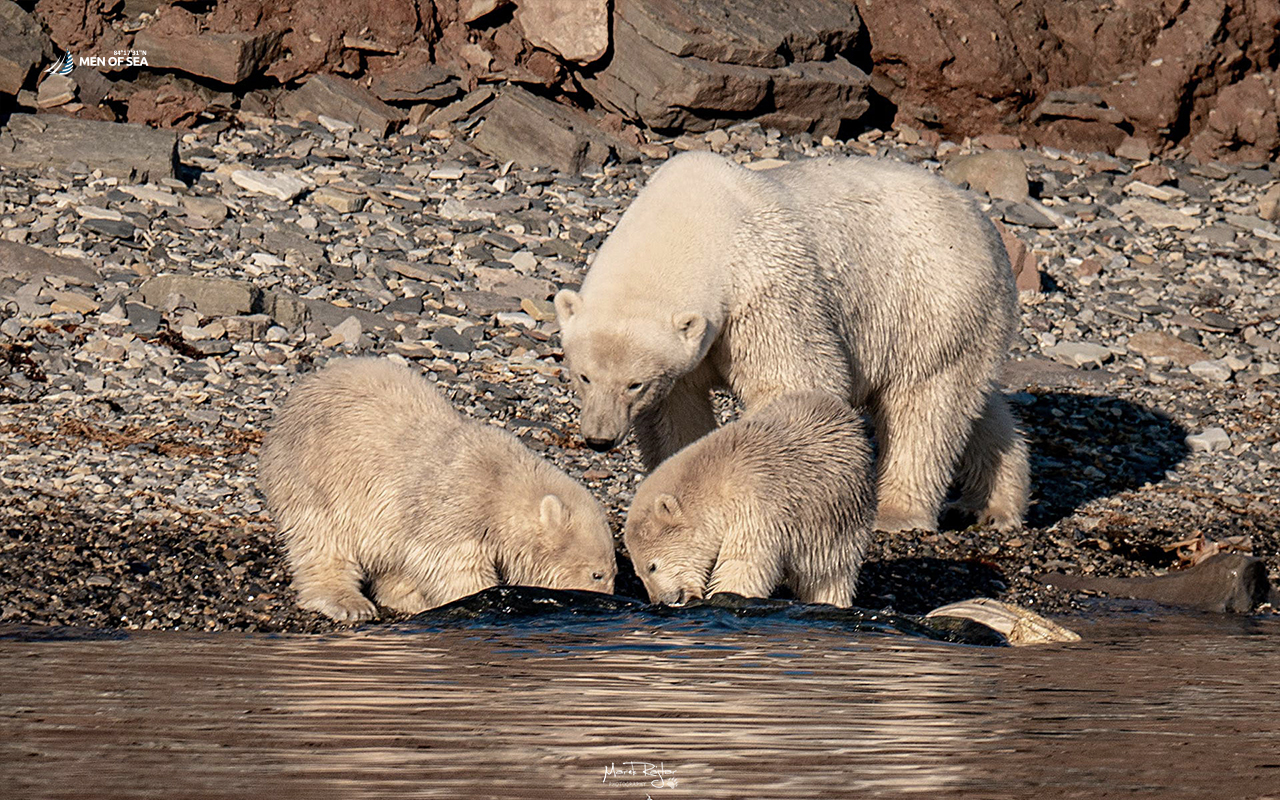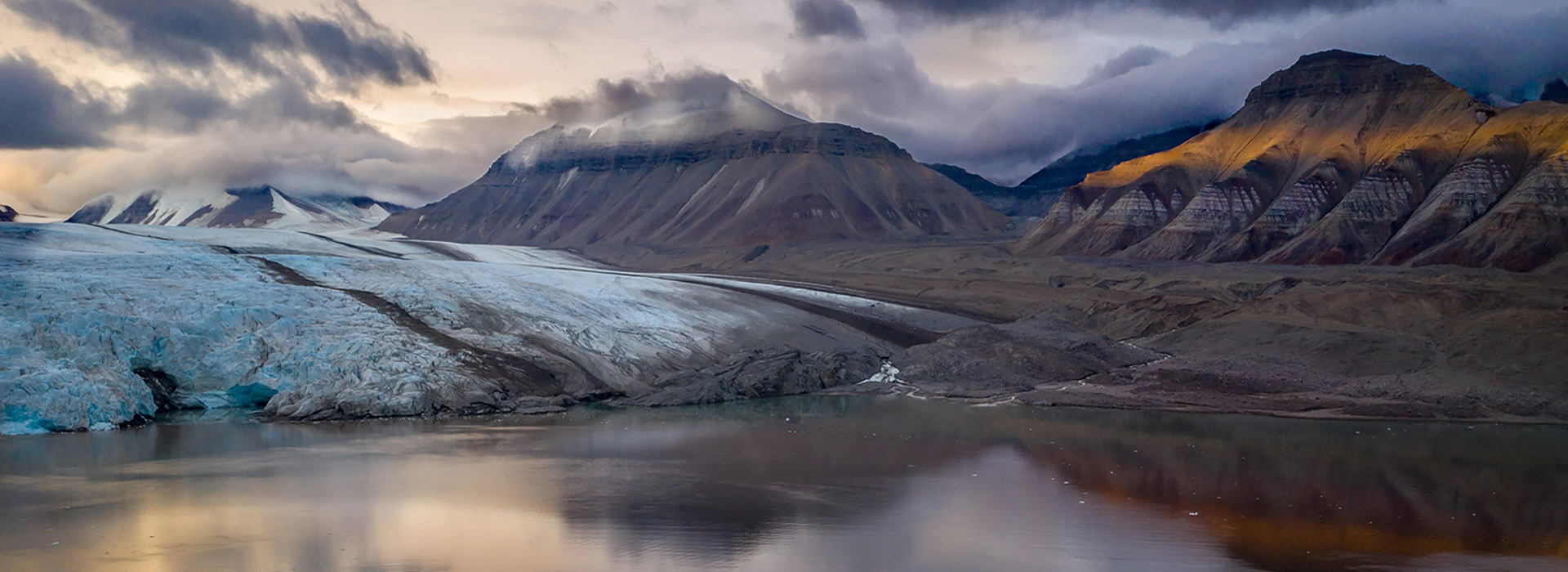
ADOLFBUKTA
Ice Caves
BASIC INFORMATION
Adolfbukta is a bay located at the end of Billefjorden. The Nordenskiöldbreen glacier, 25 km long and 11 km wide, descends into it. The glacier’s front, with its ice formations resembling hollowed-out caves, leaves a significant impression. In parts, the glacier rests against rocky formations where polar bears often rest.
To the south of the bay lies an intriguing remnant of the settlement, Brucebyen, a cultural heritage site of Svalbard, fully protected. Westward from it stands the post-Soviet abandoned mining town of Pyramiden.
Koncern Szkocko-Spitsbergeński
Brucebyen’s history is connected with the activities of Scottish oceanographer and scientist William Bruce and his establishment of the Scottish Spitsbergen Syndicate (SSS) in 1909 for mineral exploration in Spitsbergen. Its operations covered vast areas of Svalbard, particularly near Billefjorden and Tempelfjorden, as well as Prins Karls Forland to the east. The settlement was founded in 1919 and initially named Camp Bruce, intended for large-scale coal extraction. Brucebyen stands as the best-preserved settlement of its kind belonging to the Syndicate. It comprises four residential buildings, one of which is currently used by the Governor of Svalbard. One building burned down in 2010 but was rebuilt two years later. Among the houses, abandoned mining and industrial equipment can be found, often of unknown purpose. There are some remnants of a narrow-gauge railway nearby.
Adolfbukta is a regular stop on our weekly trips to Spitsbergen. The glacier is magnificent, allowing close approaches. In this area, whether on the rocks near the glacier or on the bay’s shores, polar bears are frequently encountered. Our record stands at five bears at once: a nursing female with two cubs and another female with a cub.
Trips connected with ADOLFBUKTA
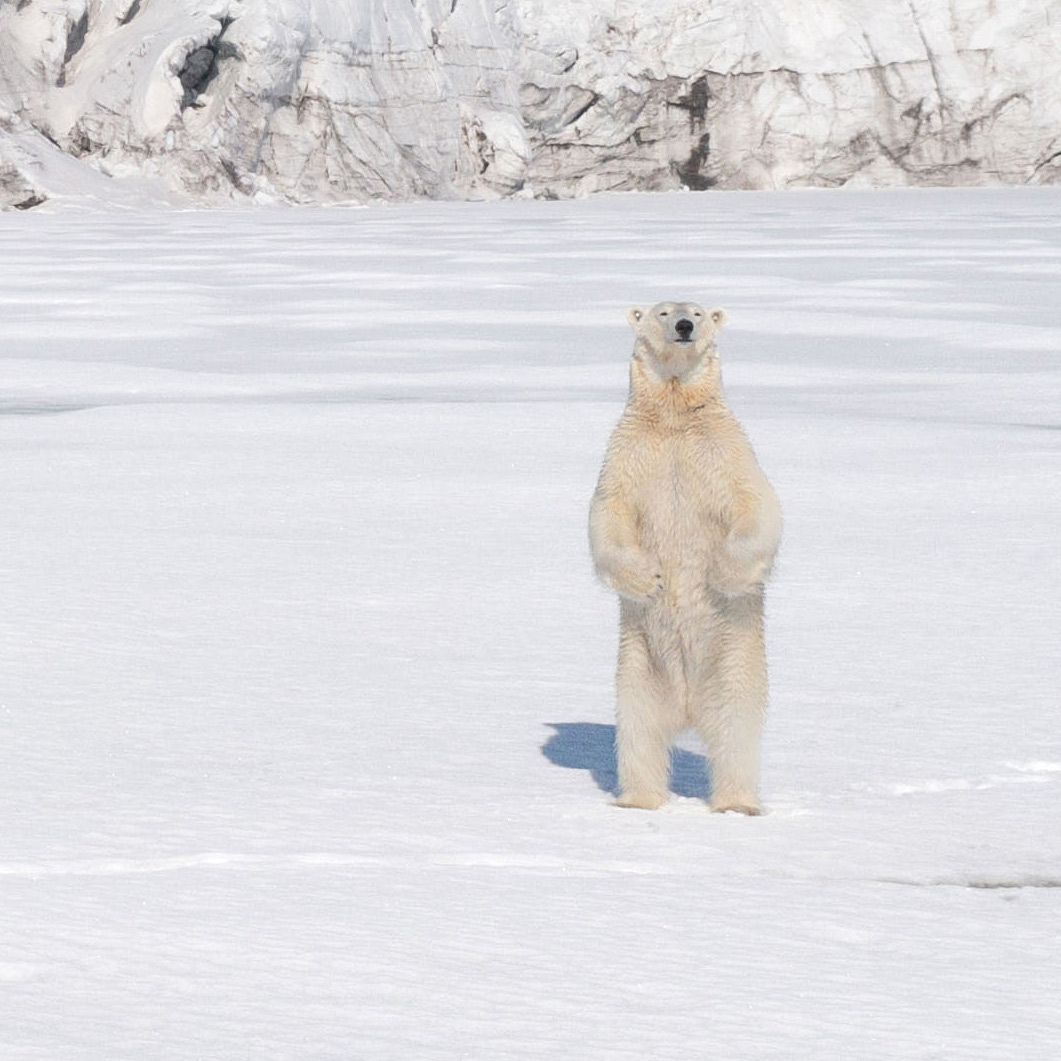
Animals of Svalbard Photo Safari #1

8 dni

Animals of Svalbard Photo Safari #2

8 dni

Animals of Svalbard Photo Safari #3

8 dni
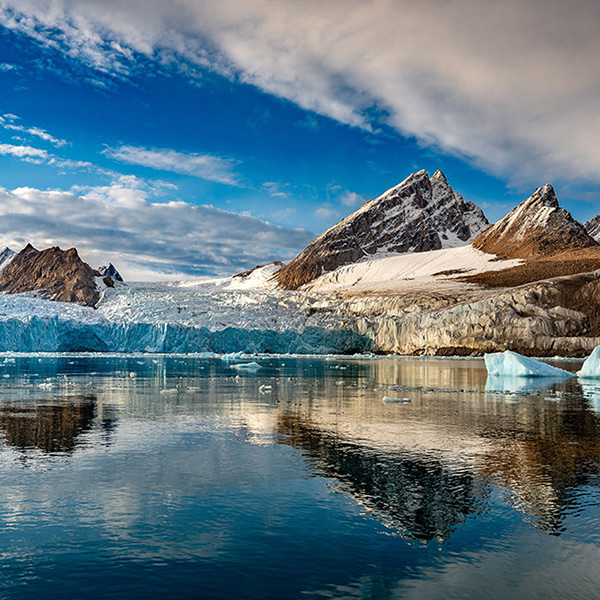
Spitsbergen in a week #5

8 dni

Spitsbergen in a week #6

8 dni

Spitsbergen in a week #8

8 dni
